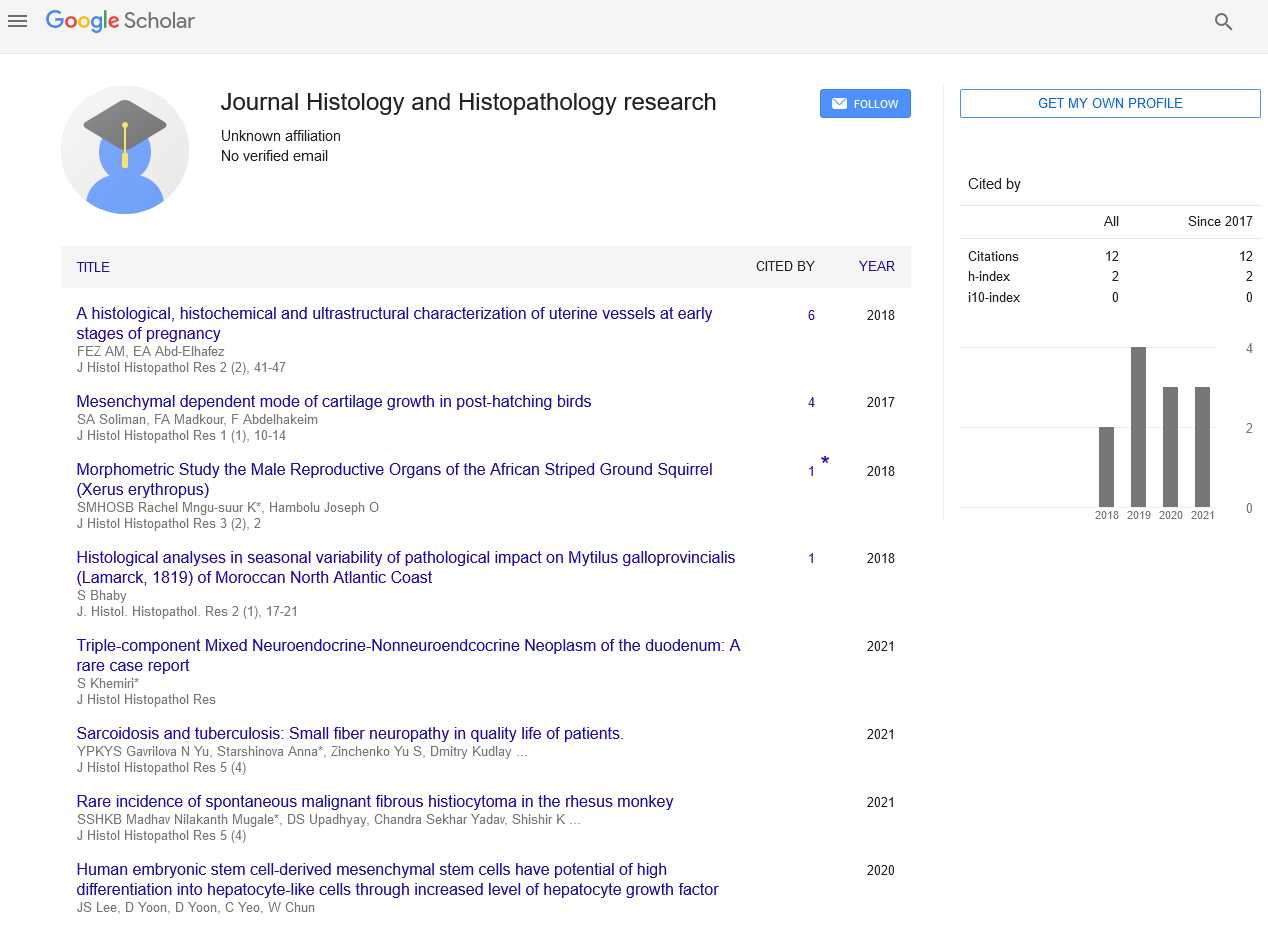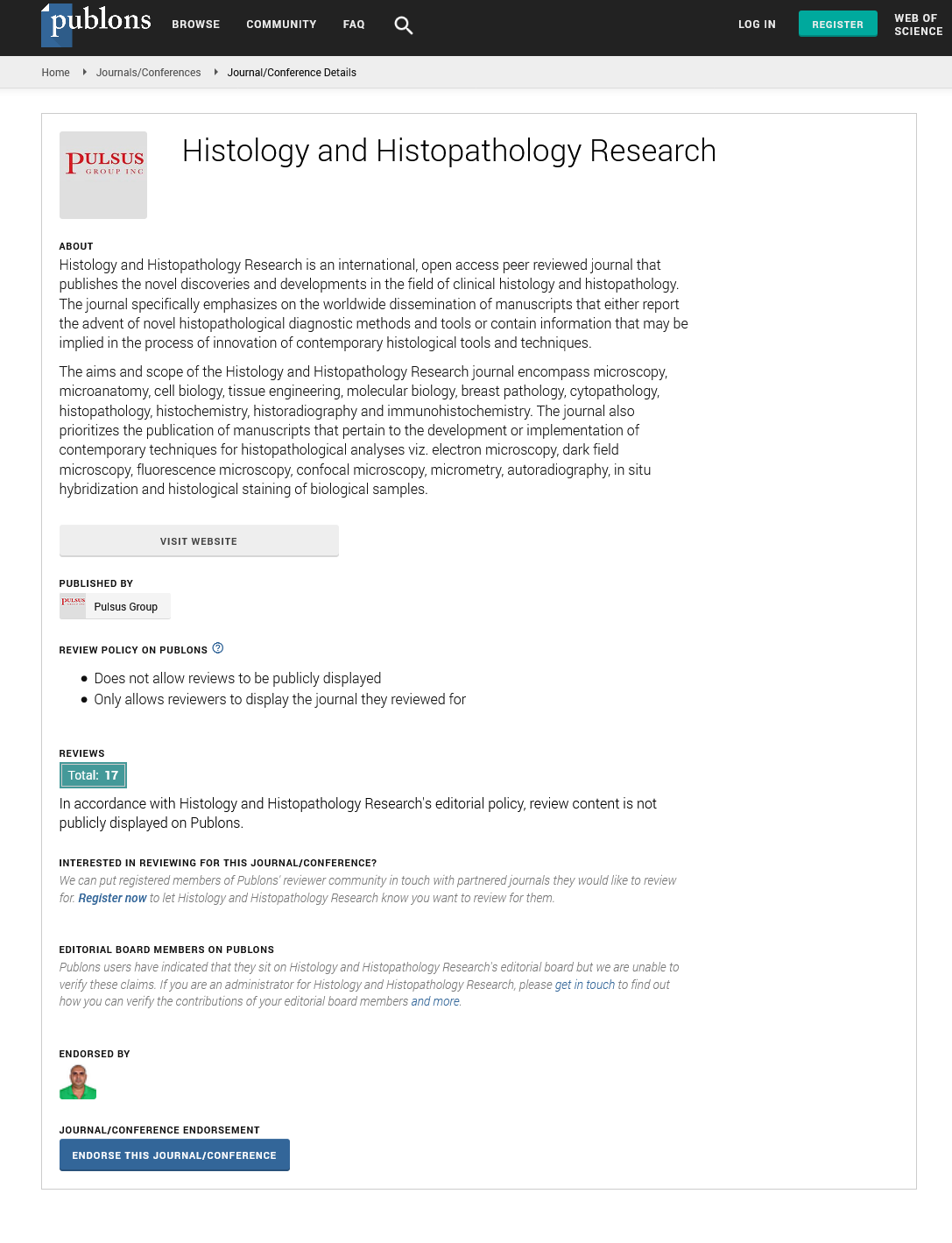A Note on Extracellular Matrix- Cartilage
Received: 01-Dec-2021, Manuscript No. PULHHR-21-3818; Editor assigned: 03-Dec-2021, Pre QC No. PULHHR-21-3818; Accepted Date: Dec 18, 2021; Reviewed: 14-Dec-2021 QC No. PULHHR-21-3818; Revised: 16-Dec-2021, Manuscript No. PULHHR-21-3818; Published: 23-Dec-2021, DOI: 10.37532/pulhhr.22.6(1).41
This open-access article is distributed under the terms of the Creative Commons Attribution Non-Commercial License (CC BY-NC) (http://creativecommons.org/licenses/by-nc/4.0/), which permits reuse, distribution and reproduction of the article, provided that the original work is properly cited and the reuse is restricted to noncommercial purposes. For commercial reuse, contact reprints@pulsus.com
Introduction
Cartilage it is not as hard and inflexible as bone, it is stiffer and less flexible than muscle. Glycosaminoglycan’s, proteoglycans, fibrous tissue, and sometimes elastin make up the matrix of cartilage.
Because of its rigidity, cartilage is commonly then used maintain tubes in the body open. Rings of the trachea, such as the cricoid cartilage and carina, provide examples.
Cartilage is made up of chondrocytes, specialized cells that produce a large amount of collagenous extracellular matrix, a ground substance rich in proteoglycan and elastin threads. Elastic cartilage, hyaline cartilage, and fibrocartilage are the three types of cartilage, with various levels of collagen and proteoglycan. Cartilage is lacking of blood vessels and nerves (it is avascular) (it is neural). However, sometimes fibrocartilage, such as the meniscus in the knee, does have some blood supply. Diffusion provides nutrients to the chondrocytes. Fluid flow is created by the compression of the articular cartilage or the bending of the elastic cartilage, which aids the diffusion of nutrients to the chondrocytes. Cartilage has an extremely slow turnover of its extracellular matrix compared to other connective tissues, because it has been shown to repair at a very slow rate compared to other tissues.
The skeletal system arises from the mesoderm germ layer throughout embryogenesis. Chondrification (also known as chondrogenesis) is the process of cartilage formation from condensed mesenchyme tissue that develops into chondroblasts and glands that secrete the extracellular matrix molecules (aggrecan and collagen type II).
Following Chondrification during embryogenesis, cartilage growth consists mostly of the development of embryonic cartilage into a more adult phase. So because division of cells in cartilage is very slow, cartilage growth is usually not based on a rise in the size or mass of the cartilage. Non-coding RNAs (miRNAs and long non-coding RNAs) have been identified as the most important epigenetic modulators that can affect chondrogenesis. This also describes the role of non-coding RNAs in a number of tissue pathological conditions, such as arthritis. The extracellular matrix's molecular structure affects well how articular cartilage operates (ECM). Biopolymers and collagens make up the majority of the ECM. Aggrecan is the main proteoglycan in cartilage, and it forms large aggregates with hyaluronic, as its name suggests. These negatively charged aggregates hold water in the tissue. The proteoglycans are restricted by collagen, particularly collagen type II.
Cartilage growth thus refers to the deposition of matrix, but it can also refer to the extracellular matrix's growth and modification. The articular cartilage of the patella is among the thickest in the human body, owing to its high pressure on the patellofemoral joint during resisted knee extension. The response of cartilage under frictional, compressive, shear, and tensile loading is one of these mechanical properties. Cartilage is a hard material with viscoelastic properties.
Cartilage has limited repair capabilities because chondrocytes will be unable to migrate to damaged areas because they are bound in lacunae. As just a result, cartilage damage is hard to overcome from.
Moreover, because hyaline cartilage lacks a blood supply, new matrix deposition is slow. Surgeons and scientists have developed a range of cartilage repair procedures in recent decades that aim to avoid the need for joint replacement. A meniscus tear in the knee cartilage can typically be surgically cut to relieve symptoms.
To create artificial cartilage, biological engineering techniques are being developed using a cellular "scaffolding" material and cultured cells.
Limulus Polyphemus branchial cartilage is the most studied cartilage in arthropods. Due to the large, spherical, and vacuolated chondrocytes, it is a vesicular cell-rich cartilage with no homologies in other arthropods.
The endosternite cartilage, a fibrous-hyaline cartilage with chondrocytes of typical morphology in a fibrous component, much more fibrous than vertebrate hyaline cartilage, as well as mucopolysaccharides immunoreactive against chondroitin antibodies, is just another type of cartilage found in Limulus Polyphemus.
Other arthropods contain tissues that really are related to endosternite cartilage. The gill cartilage and endosternite of Limulus Polyphemus embryos express ColA and hyaluronic, suggesting that these tissues comprise febrile-collagen-based cartilage. ColA and SoxE, a Sox9 analogue, are expressed by endosternite cartilage, particularly develops close to Hhexpressing ventral nerve cords.
This can also be seen in the cartilage of lungs. Octopus vulgaris and Sepia officinal are some cephalopod models used in cartilage studies. The cephalopod cranial cartilage is the invertebrate cartilage which most closely matches the hyaline cartilage of humans.
The movement of cells from the periphery to the core is believed to be responsible for the development. Chondrocytes possess different morphologies depending on when they're in the tissue.






